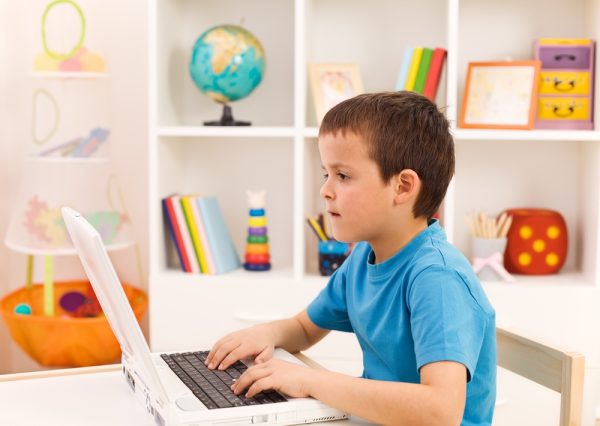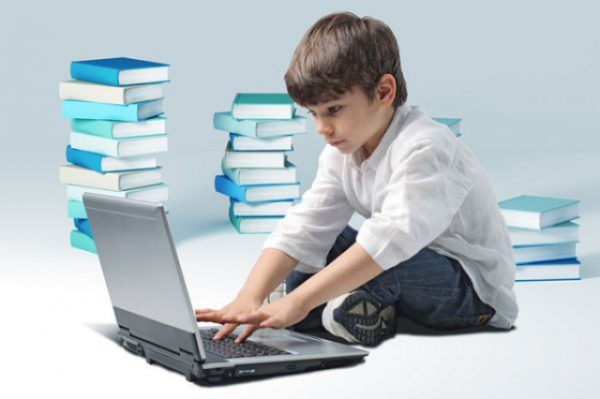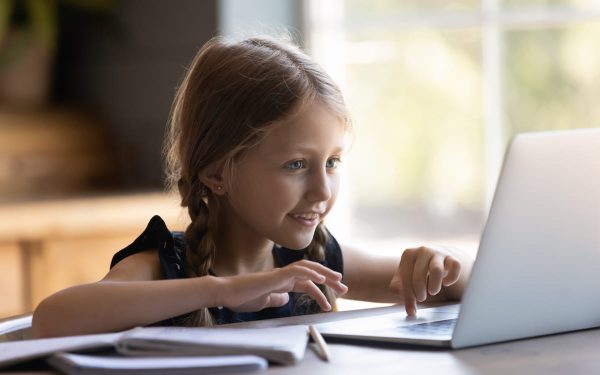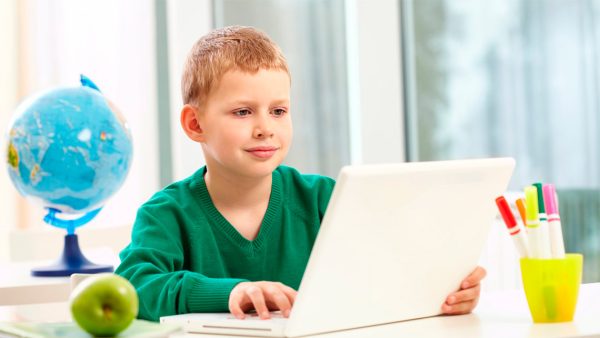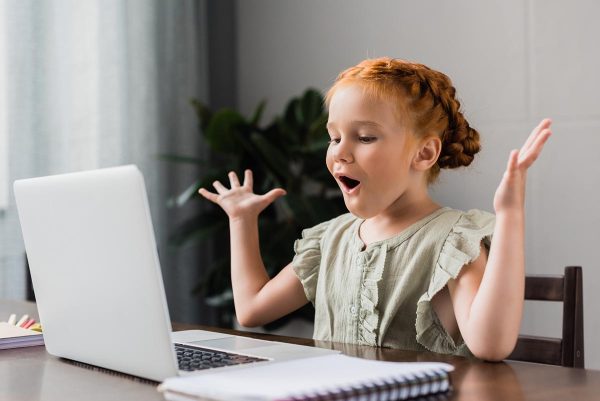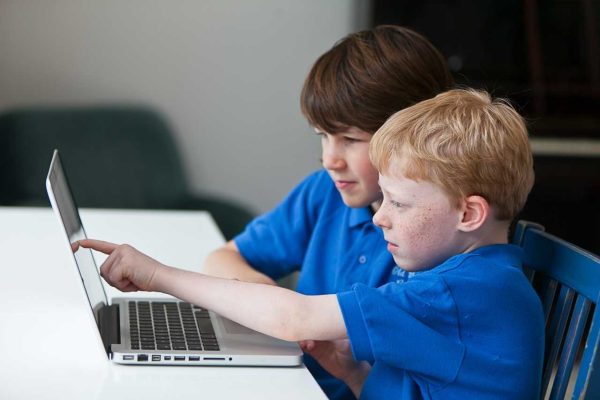Young programmer –
start your way in IT
We develop logical-algorithmic and mathematical thinking in children on the basis of learning the programming languages ScratchJr, Scratch and Minecraft.

6 reasons to take the “Young Programmer” course
1
Individual approach
The trainer takes into account the goal, interests, level of knowledge of the child, and then an individual program is prepared for him. The training process is built taking into account the age and psycho-physiological characteristics of children from 5 to 7 years old

2
Involvement in learning
Especially for children we have developed a unique form of learning. Now learning programming is more like a game. Students go to the country of computer science, where they are accompanied by virtual characters Aitigenic and Aitisha. Children perform tasks and get special stickers and bonuses.
3
Adaptive learning format
For a better understanding of the basics of programming the trainers have worked out 3 modules of training. Thanks to this, children depending on their level of knowledge will play logic games and learn to work in three different environments – ScratchJr, Scratch and Minecraft. A child can be trained in all modules, or choose one.
4
Friendship in the learning process
When selecting coaches, we evaluate not only their expertise, but also their communication skills. Our teachers can easily find a common language with a child and convey the necessary information. We have made sure that a friendly atmosphere in the classroom contributes to more effective learning.
5
Monitoring of academic progress
Our coaches monitor your child’s learning process and monitor their progress. After each lesson in your personal account you will receive feedback from them.

6
Convenient schedule
You will be able to plan time for your child’s education in a personal account, to reschedule classes for valid reasons.
How learning will help a child

Learning to use a computer
The child learns elementary computer skills through a special program GCompris, also training can be conducted with the help of a tablet.

Develops logical and creative skills
In the course, children create linear and cyclic algorithms, work in graphic editors, create games, cartoons, which contributes to the development of logical and creative thinking.

Gains basic programming knowledge
The Young Programmer course is simple and straightforward for children ages 5 and up. It teaches students how to work in the three programming environments ScratchJr, Scratch, and Minecraft.
Program of Study
Training is in English.
It takes from 24 to 64 hours to study the course.
Module 1: Introduction to Computers and Algorithms (1-3 classes)
- Introduction to computers.
- Getting acquainted with the devices of the computer, the features of the computer mouse.
- Getting to know the Internet. How to behave on the Internet.
- The programmer and programming. Algorithms, commands, programs. Visual programming languages.
By the end of the module the student will know what is a personal computer/laptop, screen, mouse, keyboard, camera, microphone, browser and the Internet. In the form of a game they will learn how to operate a computer mouse. Will learn what is programming, a program, who are the programmers, principles of program control, command, algorithm, programming languages, visual programming.
Module 2: Scratch Junior (10-15 lessons)
- Getting to know ScratchJr. Managing a character and changing his appearance.
- Getting to know the graphic editor Scratch Jr. Creating a background, switching between backgrounds. Creating sounds and voicing your character.
- The coordinate plane. Making an unconditional cyclic algorithm.
- Infinite loop in programming. Switching between characters, sending messages.
- Creation of your own cartoon. Creating their own game.
By the end of the module children will be able to work in a graphic editor, record sounds, enter text, create cartoons, fairy tales and games using the visual programming language ScratchJr. Thus, programming in ScratchJr allows a child not only to improve mathematical abilities and algorithmic thinking, but also the most important quality of the 21st century – creativity, the ability to compose their own stories and to tell them in the digital world.
Module 3: Minecraft Junior (Turtle Programming) (10-15 lessons)
- Getting to know the Minecraft environment.
- Control of the character and the virtual hero Turtle.
- Modeling 2D and 3D designs.
- Construction with linear algorithms and loops with repetition.
- Nested loops. Conditional algorithms. Variables. Random numbers.
In Minecraft programming mode, the child will learn to model not only by hand, but by programming the virtual hero Turtle. Thus the student forms an analogy between their actions and the written program for the Turtle, develops spatial-logical thinking and consolidates the use of basic programming concepts.
Module 4. Preparing for Scratch (10-15 lessons)
- Getting acquainted with the Scratch development environment.
- Creating linear algorithms.
- Controlling the character using the keyboard and computer mouse.
- Getting acquainted with the graphical editor Scratch. working with the costume and the background.
- The coordinate plane. Creation of animation.
- Unconditional loops. Infinite loops. Conditions. Cycles with condition. Variables. Game Creation.
For a smooth start of learning a more complex programming language Scratch, a gradual familiarization with its interface and construction of linear and cyclic algorithms in the new environment is provided. By the end of the module the student will learn to work in the Scratch environment, create animations and the first simple games, apply in practice the basic concepts of programming, linear algorithm, loop, branching.
*Suitable for those who can already read
How the class goes


1
The student calls the teacher in his personal office at the agreed time and broadcasts his screen to him.

2
The trainer selects the task individually according to the level of the student

3
The student performs the task under the guidance of the coach

4
At the end of the lesson, the trainer, together with the student, sums up the results and gives a homework project to work on the knowledge

5
After each lesson, the parent receives detailed feedback on the lesson

6
At home, the student can sign in at any time in the Personal Cabinet and go over the passed topics again
What the student gets

Gain access to our platform, where several thousand students from different countries are constantly learning and communicating

Permanent access to the course and all materials, as well as the opportunity to participate in hackathons and olympiads school.
